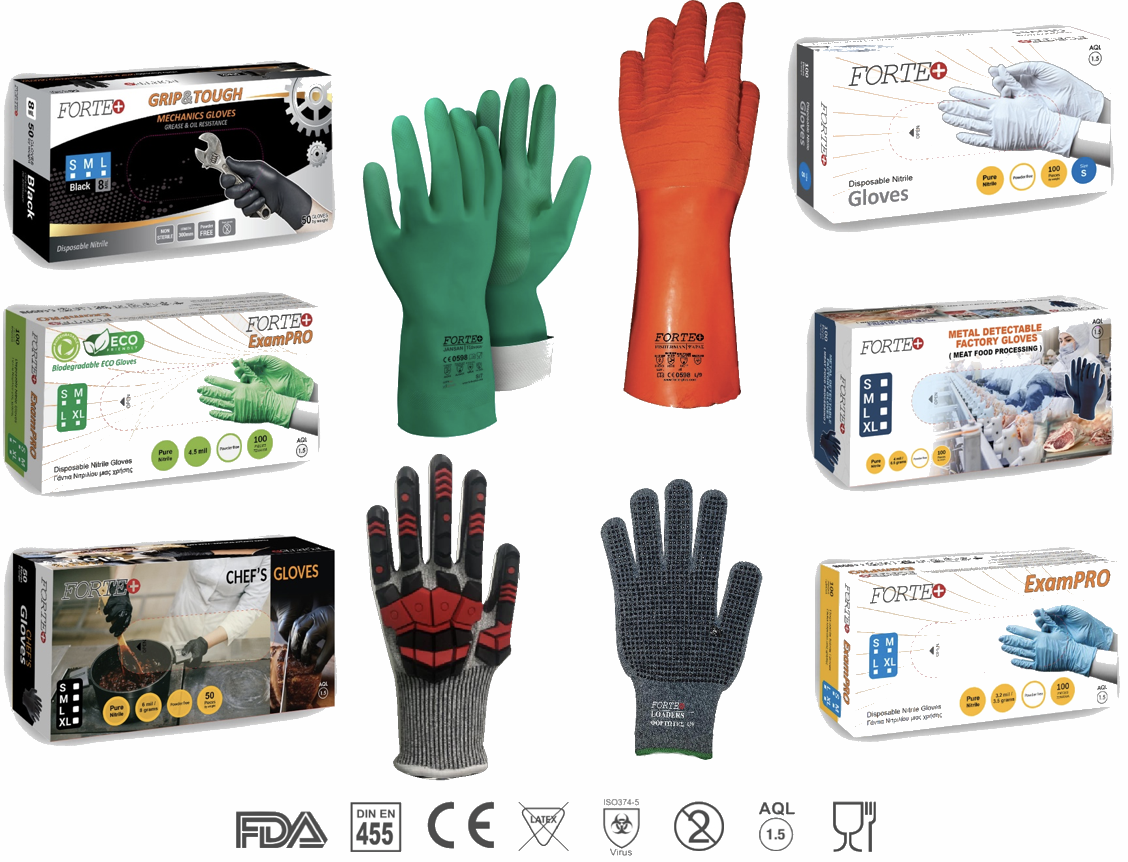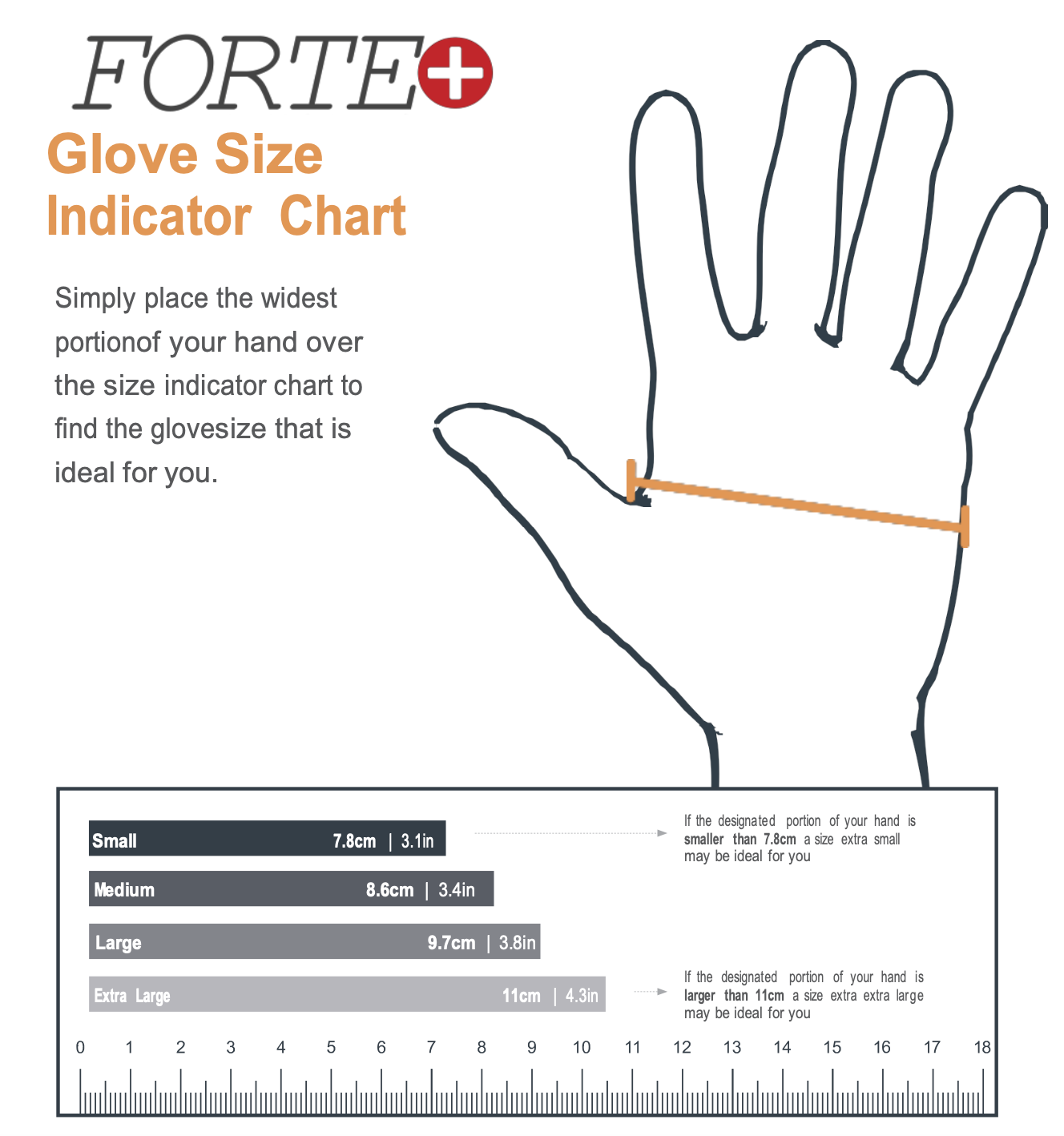
The right glove for the right application, only when it is necessary, to meet the needs of compliance, comfort and protection.

Made in Sri Lanka / Malaysia
A- Grade Exporting Product from Export Processing Zone Features:
Acrylonitrile butadiene rubber, better known as nitrile rubber or simply nitrile, is a 100% synthetic rubber notable for its unusually high chemical resistance. The original purpose of nitrile was in the aeronautical industry, as the primary material of seals, grommets, and O-rings in fuel handling equipment, such as hoses and tanks.
Other industries realized this synthetic rubber’s properties made an ideal disposable glove material. The higher chemical resistance means nitrile gloves don’t degrade as quickly as latex gloves when exposed to oils, chemicals, acids, or bodily fluids.
Nitrile gloves offer numerous advantages over their latex counterparts.
Although nitrile isn’t as flexible as natural rubber – nitrile gloves don’t grant as much dexterity as latex gloves – it is approximately 3 to 5 times more puncture resistant than latex, enabling you to wear the gloves for longer if necessary.

These properties also protect your hands from exposure to blood-borne pathogens, making them an excellent choice in medical and healthcare environments where they may be known as exam gloves or surgical gloves.
Besides its high chemical and puncture resistance, the primary advantage of nitrile as a disposable glove material is its comfortable fit and its 100% latex-free construction.
These pairs of gloves can be comfortably worn for extended periods, even by personnel with a latex allergy.
In rare cases, specific individuals may experience allergic reactions when wearing nitrile gloves. The most common symptom is allergic contact dermatitis, a Type IV hypersensitivity reaction, typically caused by allergenic additives, such as glove powder (designed to absorb sweat moisture and make donning and doffing easier) or sulfur-based accelerants (intended to increase the gloves’ elasticity).
Although these symptoms are much milder and less dangerous than a typical later allergy, you can prevent these issues by choosing powder-free and accelerator-free nitrile glove models.
Nitrile gloves are available in various cuff lengths suitable for various applications. Standard short-cuff gloves are suitable for general use and most applications.
For long-term surgical applications (more than 20 minutes) or any situations with a high risk of blood projection, long-cuffed models (8” to 12” in length) provide pathogen protection from the fingertips to the forearms.
Although the traditional color for nitrile gloves is blue, they are available in many colors: Dark blue, white, black, orange, purple, and more. The color of a pair of nitrile gloves has no impact on its performance and is purely aesthetic.
Many organizations color-code gloves, assigning one color to a specific task or department. For example, a hospital may use blue for general applications, purple for specific surgeries, and black for non-healthcare work.
There are two types of nitrile gloves: Industrial-grade and medical-grade sometimes called exam-grade or exam gloves. The grade of a pair of gloves determines its versatility and range of recommended applications.
Industrial-grade refers to nitrile gloves built according to the material’s original, chemically resistant properties. They are suitable for many applications, such as the automotive industry, foodservice, solvent production, tattoo shops, janitorial work, and even home sanitation.
However, they are not recommended for healthcare environments, as they may or may not meet the FDA requirements for healthcare safety.
To pass the FDA’s medical-grade certifications, a specific brand of nitrile gloves must pass blood-borne pathogen penetration resistance tests and not possess additives unsuitable for surgeries or medical exams (e.g., glove powder). They are otherwise identical to industrial-grade gloves and can be used safely in any application.
We thoroughly test and develop our PPE according to all relevant American standards, as defined by ANSI, AAMI, the FDA, and the CDC.

